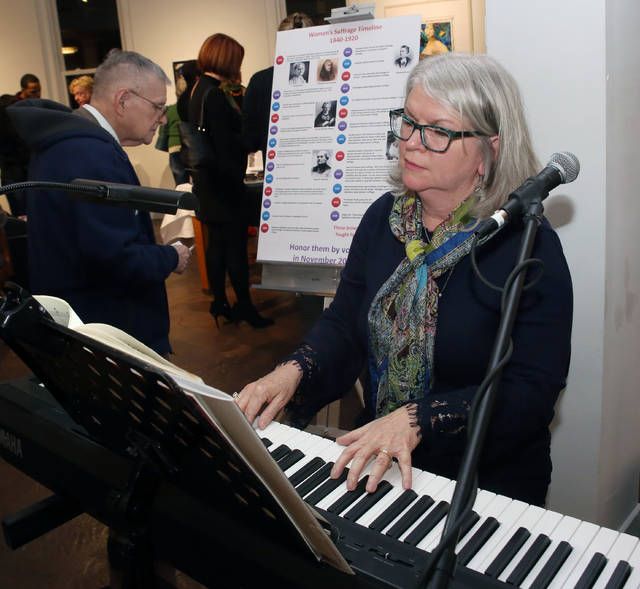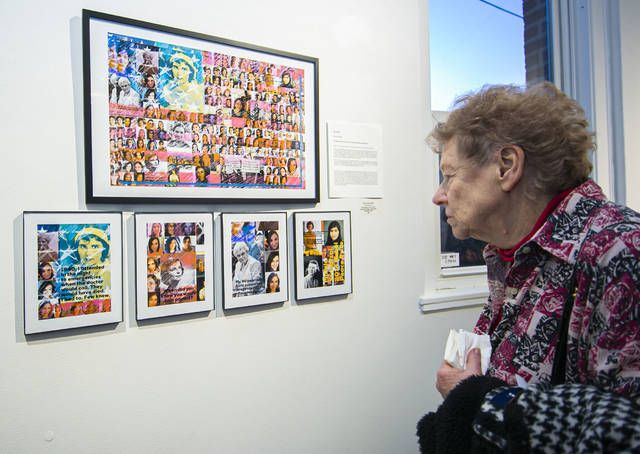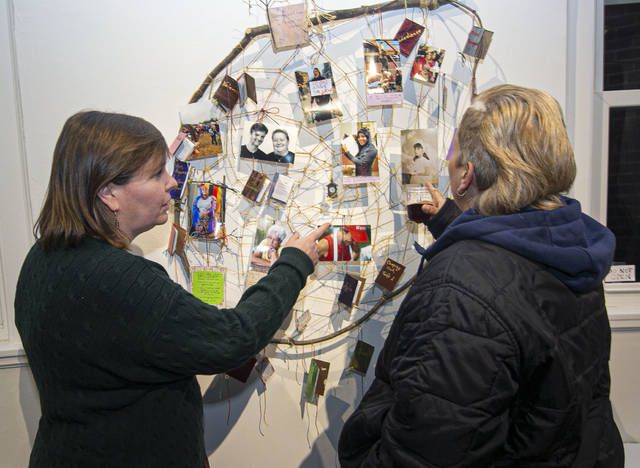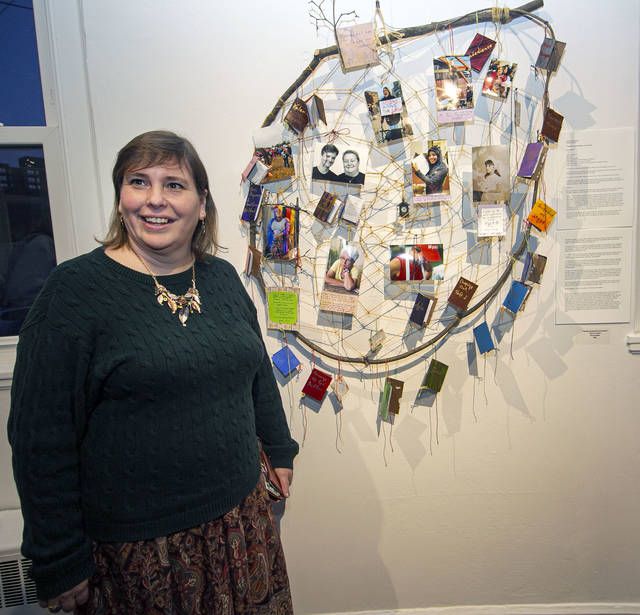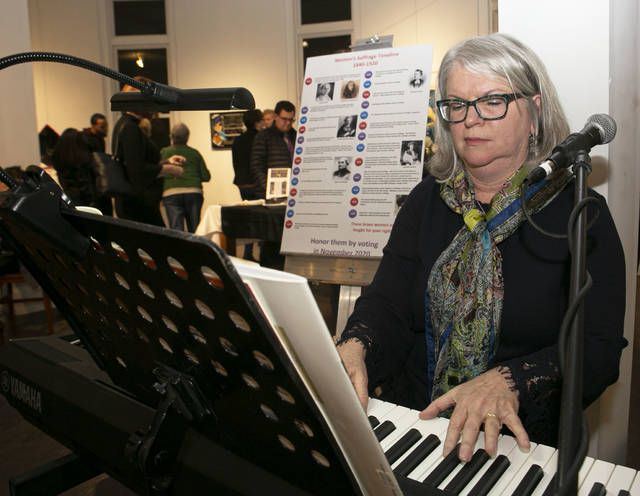Click here to subscribe today or Login.
WILKES-BARRE — Standing in the middle of the “HERSTORY — Then & Now” exhibit during its opening reception Friday evening, Marie Perks of Forty Fort summed up the feelings of many visitors to the Wyoming Valley Art League’s Centre for the Arts.
“I want to come back when I have more time to read everything,” she said, glancing around the room at the detailed artist statements that accompanied works by 12 female artists. “Some of them make you want to cry.”
As visitors walked around the room, they saw stories of triumph in the words and photos Weavre Cooper of Bear Creek had framed inside a handmade dream catcher — from her daughter Danica participating in a mud run the day before her first marathon; to her partner Evelyn, shown as a child who grew up to do undercover police work; to a woman who had registered to vote “immediately” after becoming a citizen.
“Every woman you pass is a survivor,” Cooper said. “Whether you consider her to be a person of privilege or a person of no consequence, she has triumphed over something.”
Next to Cooper’s mixed media piece was an acrylic piece by Nataki McNeal Bhatti of Wilkes-Barre, whose painting paid tribute to her black and Native ancestors and whose artist statement spoke of heartbreaking history, “how our bodies didn’t belong to us, how rape became an acceptable rite of passage.”
“I tell people I have three personalities,” Bhatti said as bystanders admired her painting. “Sometimes I act like my mother. Sometimes I act like my grandmother. A lot of times we carry the trauma of our mothers. You may or may not be conscious of that. I am very conscious of that. I want to tell their stories and speak their truth.”
While visitors mingled and admired the artwork, Michele Millington of Mountain Top played works of female composers on a keyboard. A poster she had put together named several born in the 19th century, including Clara Schumann of Germany, Teresa Carreno of Venezuela, Ethel Smyth of England and Cecile Chaminade of France.
“It was very exciting putting this together,” said Wyoming Valley Art League secretary Allison Maslow, who sported a “Votes for Women” button on her lapel at Friday’s reception.
The exhibit, which will be on display at the Circle Centre for the Arts, rear 130 South Franklin St., Wilkes-Barre, through April 2, was put on in collaboration with the Luzerne County Historical Society, which contributed items from the 1920s, the decade the 19th amendment was ratified and gave women the right to vote.
The 1920s were an era of increased freedom for women — from shorter skirts to the chance to drive.
But as various pieces of art pointed out, double standards still exist.
As the artist statement displayed by Rose Wright’s textile piece explained, such “women’s work” as beading, crocheting, hand sewing and applique was often considered “craft” rather than “art.”
As Robin Shudak’s “Tilt A World” mixed media piece indicated society punishes women who drink alcohol in ways it doesn’t punish men.
And next to Trinka Ravaioli’s portrait of Christine Blasey Ford, who testified against Brett Kavanaugh during his Supreme Court nomination hearing, was this essay:
“When a woman says, ‘This man raped me long ago,’ we say, ‘But that was in the past. He can’t change the past.’ When a girl says, ‘This boy raped me last night,’ we say, ‘But his future! We can’t wreck his future!’
“And there she stands, suspended between his past and his future, with no value of her own except for how much she’s worth to whatever political party is feeling desperate today.”





